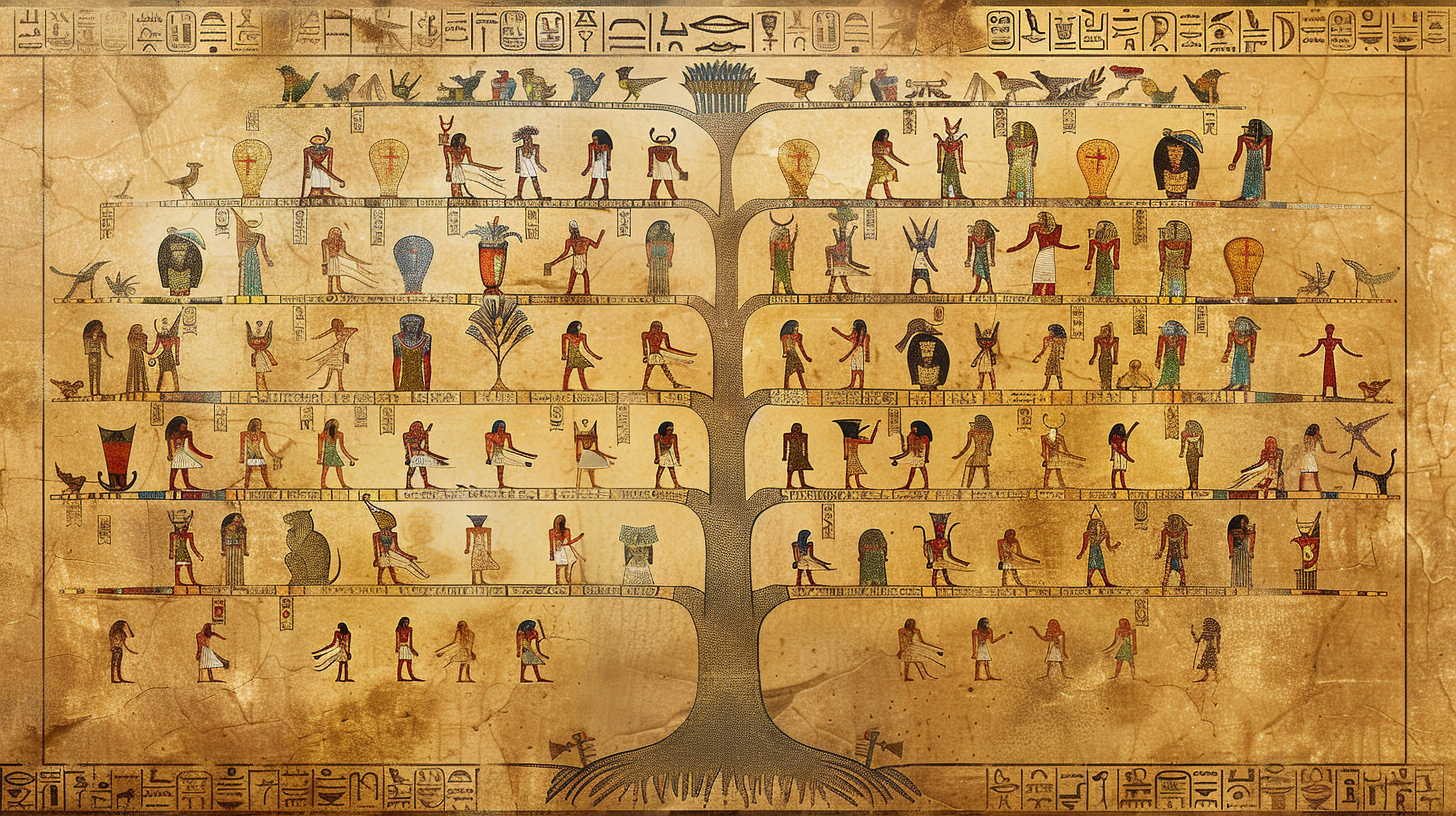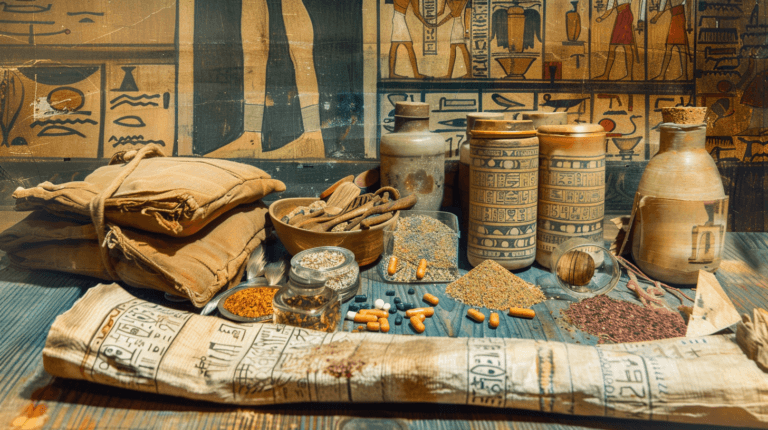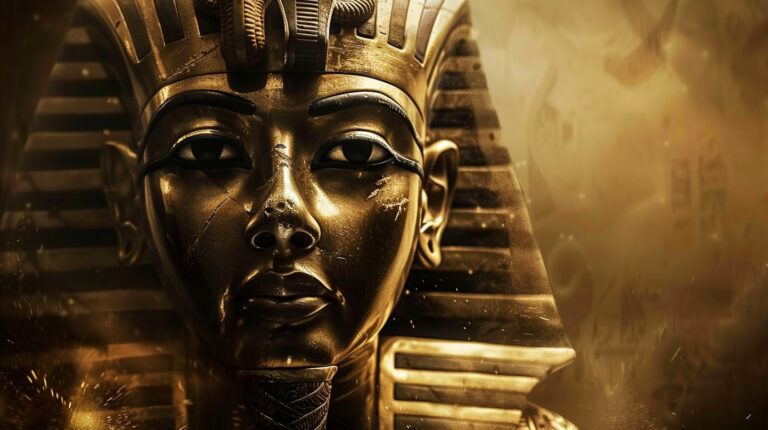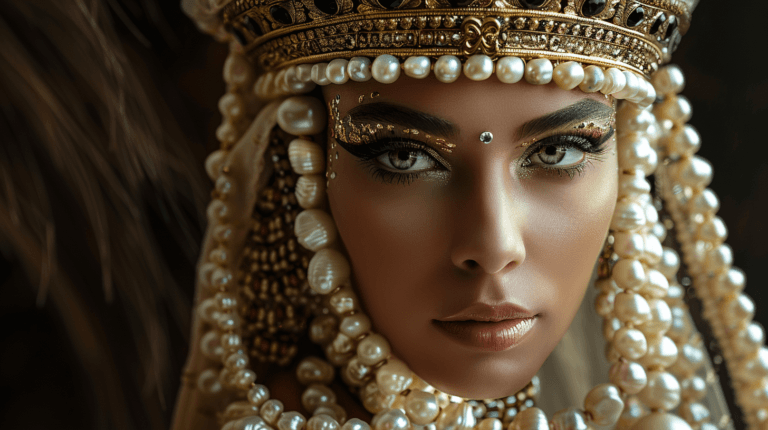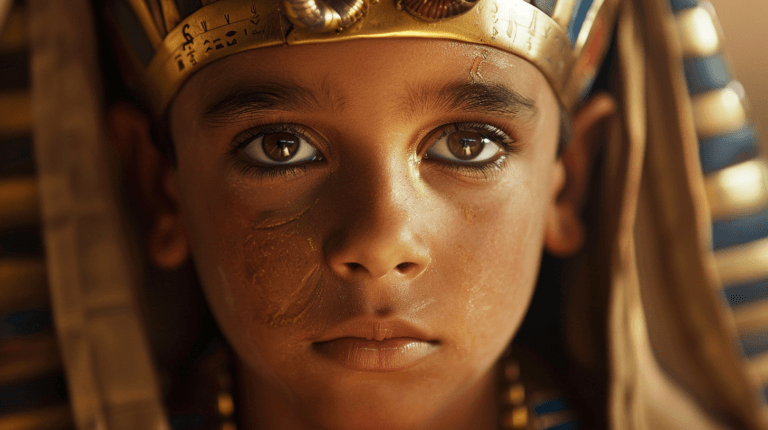What Was the King Tut Family Tree Like?
The King Tut family tree reveals shocking secrets of three generations of inbreeding that doomed the boy king to fragile health and an early death. It was filled with twists and turns and offers a window into the dramatic world of Ancient Egypt’s controversial relationships.
This fascinating royal bloodline is key to understanding the power struggles and politics of ancient Egypt. To better grasp the famous pharaoh’s background, let’s dive into the details of him and his immediate family.
King Tut Family Tree
King Tut, as he is commonly known, was the son of Akhenaten, a revolutionary pharaoh who changed Egyptian religion by worshipping a single god, Aten. When Tutankhamun came to power, he restored the traditional practice of worshipping multiple gods, bringing stability back to the kingdom.
Tutankhamun’s wife, Ankhesenamun, was not just his partner but also his half-sister, a practice aimed at preserving royal bloodlines. Explore the details of his immediate family to see how these relationships shaped the life of one of Egypt’s most famous pharaohs.

Who Was King Tut’s Father?
King Tut’s father was Pharaoh Akhenaten, a ruler known for his religious revolution. Akhenaten tried to shift the Egyptian religion towards worshipping a single deity, Aten, the sun disk.
Akhenaten’s actions led to many changes in Egyptian society. His attempts to change the religion were not well-received by everyone.
Akhenaten’s legacy has always been a topic of great interest among historians. His reign represents one of the most intriguing periods of ancient Egyptian history.

Who Was King Tut’s Mother?
King Tut’s mother is widely believed to be one of Akhenaten’s sisters, Kiya or Nefertiti. DNA tests on the mummies have supported this theory. Ankhesenamun, who was both his wife and possibly his half-sister, adds another layer of complexity to the family dynamics.
The practice of royal families intermarrying was common in ancient Egypt to preserve the purity of their bloodlines. This did result in various health issues, as seen in King Tut’s physical ailments. Despite the challenging family circumstances, his reign remains iconic in Egyptian history.
King Tut’s extended family played a crucial role in shaping his lineage and ensuring his position as a young pharaoh. Each generation before him contributes vital pieces to the puzzle of his ancestry.

Who Was King Tut’s Grandfather?
King Tut’s grandfather was Amenhotep III. He ruled Egypt during one of its most prosperous and stable periods. Amenhotep III was a powerful pharaoh known for his vast building projects and diplomatic relations.
He married Tiye, a strong and influential queen with non-royal blood. Their union showed a blend of royalty and commoner, which was somewhat unusual for that era.
Amenhotep III’s reign marked the height of Egyptian culture, arts, and international prestige. These accomplishments set the stage for the future of King Tut’s lineage.
Who Was King Tut’s Great-Grandfather?
Amenhotep III’s father, Thutmose IV, was King Tut’s great-grandfather. Thutmose IV’s rule is often remembered for the Dream Stele, which tells the story of how he became pharaoh after a divine promise by the Sphinx.
His reign was characterized by military campaigns and continued expansion of Egypt’s wealth and influence. Thutmose IV built many temples and monuments, cementing his legacy. As a ruler, he maintained the balance of power and religion, which influenced the ensuing generations.

Who Was King Tut’s Great-Great-Grandfather?
Thutmose IV’s father, Amenhotep II, was King Tut’s great-great-grandfather. Amenhotep II was known for his athletic prowess and military skills. He led numerous campaigns and was instrumental in securing Egypt’s borders and asserting its dominance.
His contributions to the dynasty included both military and infrastructural advancements. Amenhotep II’s achievements paved the way for the stability that his son, grandson, and great-grandson would inherit.
King Tut’s family tree is a maze of interwoven relationships. Intermarriage was common to keep the royal bloodline pure, but it led to significant health issues.
The Practice of Royal Intermarriage
Ancient Egyptian royals often married within the family. It wasn’t unusual for siblings to marry, as seen with King Tut and his half-sister Ankhesenamun. This practice aimed to preserve the divine nature of the pharaoh’s bloodline. Tutankhamun’s parents were also closely related, further complicating his ancestry.
Family Relationships:
- Father: Amenhotep, known for his religious reforms.
- Stepmother: The famous Queen Nefertiti.
- Spouse: Ankhesenamun, his half-sister.
These relationships might seem unusual now, but they were part of royal tradition back then.

Health Issues Resulting from Limited Genetic Variation
King Tut’s health was fragile, largely due to his family’s practice of intermarriage. Genetic testing has revealed several problems.
He likely suffered from a bone disorder, evident from his clubfoot. DNA analysis also confirmed that he had malaria.
Health Problems:
- Bone disorders: Likely due to inherited defects.
- Malaria: Confirmed through DNA testing.
- Infectious diseases: Vulnerability increased by genetic issues.
These health problems would have made daily activities painful. His physical condition may have contributed to his untimely death at 18-19 years old.
Discoveries and Modern Research
King Tutankhamun’s life and death have been subject to a lot of discoveries and modern research. Advances in DNA analysis and the findings inside his tomb have helped us understand the King Tut family bloodline and his life better.

The Discovery of Tutankhamun’s Tomb
Howard Carter found King Tutankhamun’s tomb in the Valley of the Kings in 1922. This was a massive discovery because the tomb was mostly intact. King Tut’s tomb was unusually small for a pharaoh, suggesting it was intended for someone else or hastily prepared due to his unexpected death.
Inside, there were many artifacts, including a gold coffin and the famous burial mask.
The items in the tomb provided insights into ancient Egyptian rituals and daily life. I was amazed to learn that Tutankhamun’s tomb had over 5,000 items. This discovery was like finding a treasure chest filled with history.
DNA Analysis and King Tut Family Bloodline
Modern DNA testing has shed new light on King Tutankhamun’s family tree.
Experts have found that Tutankhamun was born to parents who were siblings. This incestuous relationship may have caused some of his health issues, like a cleft palate and a club foot.
DNA analysis has also identified some of Tutankhamun’s ancestors, helping us understand more about the royal bloodline.
These studies are crucial because they reveal the genetic conditions prevalent in the royal family. They also give us a clearer picture of how royal families sought to keep their bloodlines pure.
Conclusion on King Tutankhamun’s Family Tree
King Tutankhamun, known as the Boy King, ruled Egypt during the 18th Dynasty. His reign was brief, marked by attempts to restore traditional Egyptian polytheism after the reforms of his father, Akhenaten.
Family Tree Highlights:
- Parents: Akhenaten (father) and an unnamed mother, likely a sister of Akhenaten.
- Grandparents: Amenhotep III and Queen Tiye, significant figures in the 18th Dynasty.
Notable Relatives:
- Wife: Ankhesenamun, his half-sister and possibly daughter of Akhenaten and Queen Nefertiti.
- Children: Evidence of two stillborn daughters found in his tomb.
Tutankhamun’s family tree reveals a pattern of royal intermarriage. This practice aimed to keep the royal bloodline pure but led to genetic disorders.
His health issues included a clubbed foot, cleft palate, malaria, and a broken leg at the time of death.
The mummy of King Tut showed signs of these conditions, highlighting the challenges he faced.
His afterlife and legacy are celebrated, with his tomb treasures providing vast knowledge about Egyptian culture and art. Though his reign was short, his death and burial practices have fascinated historians for generations.

